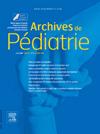Immediate allergies to chlorhexidine: A series of pediatric cases from the French pharmacovigilance database
IF 1.3
4区 医学
Q3 PEDIATRICS
引用次数: 0
Abstract
Background
Immediate allergic reactions to chlorhexidine have been clearly identified in numerous countries, generating governmental warnings worldwide.
Objectives
The aim of our study was to characterize (i) these allergies, which are less reported in pediatric populations, and (ii) the patient-at-risk profile so as to suggest preventive measures.
Methods
In association with the allergy department and the regional pharmacovigilance center in Rennes University Hospital, France, a multicenter retrospective, descriptive, and observational study was conducted using data from the national pharmacovigilance database for the period of January 1, 2010 to June 30, 2020. Immediate allergies to chlorhexidine cases based on a clinical history compatible with an immunoglobulin E (IgE)-mediated reaction, along with positive allergic testing, were analyzed.
Results
Of the 478 cases identified, 17 pediatric cases of immediate allergic reaction to chlorhexidine (13 cases of grades II–IV anaphylaxis) were retained for the analysis. For 58.8 % of these cases, a history of a previous more moderate reaction to the substance was identified. The reactions occurred most frequently in cases of domestic misuse (88.2 %, n = 15/17) of chlorhexidine to dress a wound. Recurrence was reported for two cases, later leading to severe reactions at each new exposure to the allergen, suggesting an aggravation mechanism.
Conclusion
The number of pediatric cases of immediate allergies to chlorhexidine has possibly been underestimated on account of insufficient knowledge of the allergy and in view of its common usage. Information on the method of caring for wounds among children and on the risk of allergic sensitization as well as exploring any unusual reaction to chlorhexidine application could reduce the number of allergic reactions.
对洗必泰的直接过敏:法国药物警戒数据库中的一系列儿科病例:对洗必泰立即过敏:来自法国药物警戒数据库的一系列儿科病例。
背景:洗必泰的直接过敏反应已在许多国家被明确发现,并引发了全球范围内的政府警告:我们的研究旨在了解(i)这些过敏反应的特征(在儿科人群中报告较少)和(ii)高危患者的特征,从而提出预防措施:与法国雷恩大学医院过敏科和地区药物警戒中心合作,利用国家药物警戒数据库中 2010 年 1 月 1 日至 2020 年 6 月 30 日期间的数据,开展了一项多中心回顾性、描述性和观察性研究。研究分析了根据与免疫球蛋白E(IgE)介导的反应相符的临床病史和阳性过敏试验得出的洗必泰过敏病例:在已确定的 478 个病例中,有 17 个氯已定立即过敏反应的儿科病例(13 个 II-IV 级过敏性休克病例)被保留下来进行分析。在这些病例中,58.8%的病例曾对该物质产生过中度反应。这些反应最常发生在家庭滥用洗必泰包扎伤口的病例中(88.2%,n = 15/17)。据报告,有两例病例出现复发,后来每次接触过敏原都会导致严重反应,这表明存在加重机制:结论:由于对洗必泰过敏的认识不足以及洗必泰的普遍使用,对洗必泰直接过敏的儿童病例数可能被低估了。了解儿童伤口护理方法、过敏致敏风险以及探索使用洗必泰后的任何异常反应,可以减少过敏反应的发生。
本文章由计算机程序翻译,如有差异,请以英文原文为准。
求助全文
约1分钟内获得全文
求助全文
来源期刊

Archives De Pediatrie
医学-小儿科
CiteScore
2.80
自引率
5.60%
发文量
106
审稿时长
24.1 weeks
期刊介绍:
Archives de Pédiatrie publishes in English original Research papers, Review articles, Short communications, Practice guidelines, Editorials and Letters in all fields relevant to pediatrics.
Eight issues of Archives de Pédiatrie are released annually, as well as supplementary and special editions to complete these regular issues.
All manuscripts submitted to the journal are subjected to peer review by international experts, and must:
Be written in excellent English, clear and easy to understand, precise and concise;
Bring new, interesting, valid information - and improve clinical care or guide future research;
Be solely the work of the author(s) stated;
Not have been previously published elsewhere and not be under consideration by another journal;
Be in accordance with the journal''s Guide for Authors'' instructions: manuscripts that fail to comply with these rules may be returned to the authors without being reviewed.
Under no circumstances does the journal guarantee publication before the editorial board makes its final decision.
Archives de Pédiatrie is the official publication of the French Society of Pediatrics.
 求助内容:
求助内容: 应助结果提醒方式:
应助结果提醒方式:


